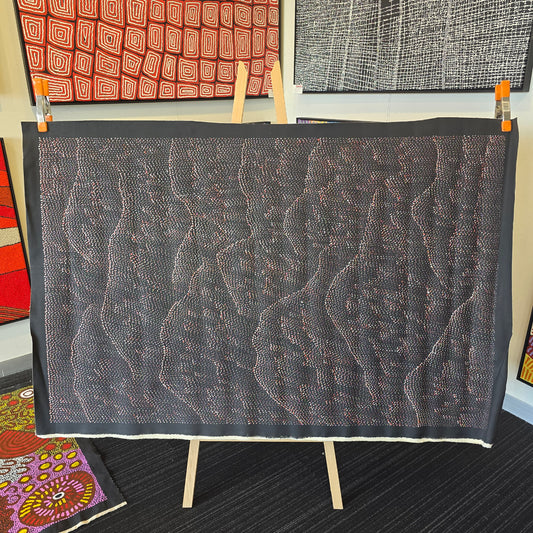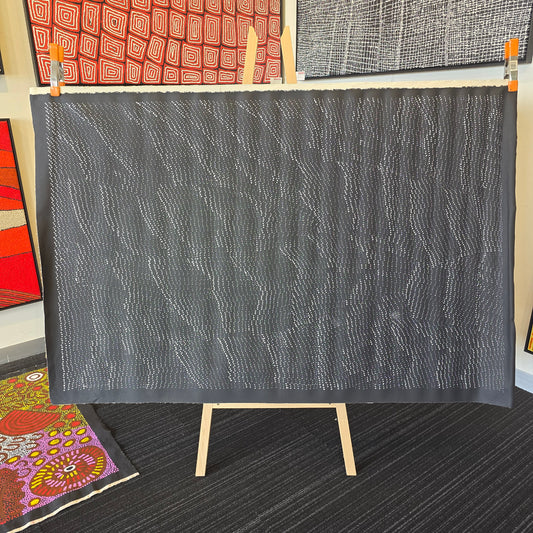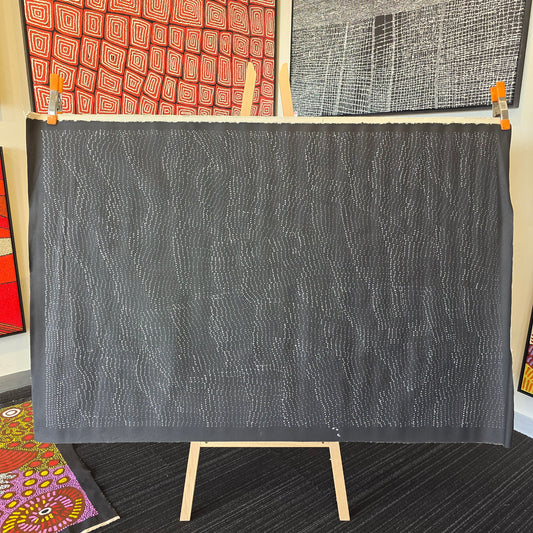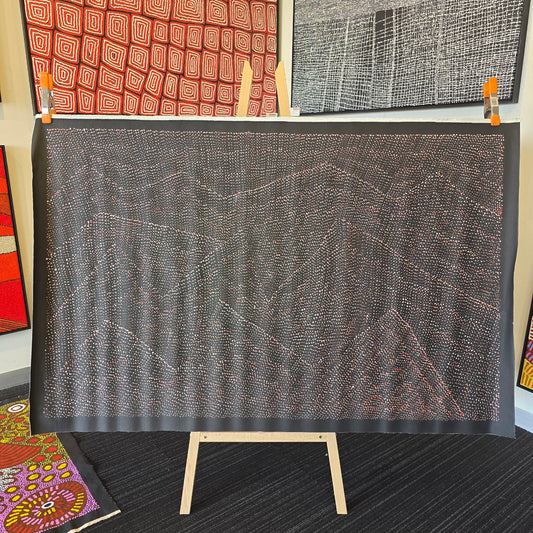Collection: Lily Kelly Napangardi
-
Lilly Kelly Napangardi 970 mm x 1540 mm
CODE : 3871Vendor:Lily Kelly NapangardiRegular price $3,400.00 AUDRegular priceUnit price / per -
Lilly Kelly Napangardi 1000 mm x 1500 mm
CODE : 3925Vendor:Lily Kelly NapangardiRegular price $3,250.00 AUDRegular priceUnit price / per -
Lilly Kelly Napangardi 900 mm x 2000 mm
CODE : 4963Vendor:Lily Kelly NapangardiRegular price $3,900.00 AUDRegular priceUnit price / per -
Lily Kelly Napangardi 980mm x 1530mm
CODE : 3921Vendor:Lily Kelly NapangardiRegular price $3,400.00 AUDRegular priceUnit price / per -
Lilly Kelly Napangardi 95cm x 154cm
CODE : 3006Vendor:Lily Kelly NapangardiRegular price $3,200.00 AUDRegular priceUnit price / per
Lily Kelly Napangardi stands as a prominent Aboriginal artist who paints stunning visual interpretations of Central Australian desert terrains through her dot painting technique. Her artworks reflect the shifting sand hills (Tali) within her ancestral territory through complex patterns and moving lines while maintaining a strong spiritual bond with the Country.
The Luritja people recognise Lily as their senior law woman who carries significant cultural wisdom and tasks to support her community. Through her responsibilities as a senior law woman, she actively protects traditional stories and ceremonies that guide younger members of the community to connect with their cultural heritage. The paintings created by Lily Kelly Napangardi provide viewers with a firsthand experience of the varied activities and touchable elements that appear in Australia's desert.
Early Life and Cultural Heritage
Lily Kelly Napangardi emerged around 1948 at Haasts Bluff which stands as a distant settlement within the boundaries of the Northern Territory in Australia. She learned her traditional Luritja heritage by interacting with her people's cultural practices and studying ancestral territories together with Dreaming stories and ceremonial protocols from childhood.
During the 1960s government relocation initiatives forced the movement of Aboriginal communities to Papunya which would later become an essential centre for contemporary Indigenous art. At Papunya, the Western Desert painting movement developed with Geoffrey Bardon and the founding members of Papunya Tula school translating their cultural stories into distinctive dot painting art forms.
In the early 1980s, Lily relocated from Papunya and settled in Mount Liebig (Watiyawanu) which has its location 325 kilometres west of Alice Springs. While living at this location she progressed in cultural and artistic work until she gained elder status and establishment as an artist.
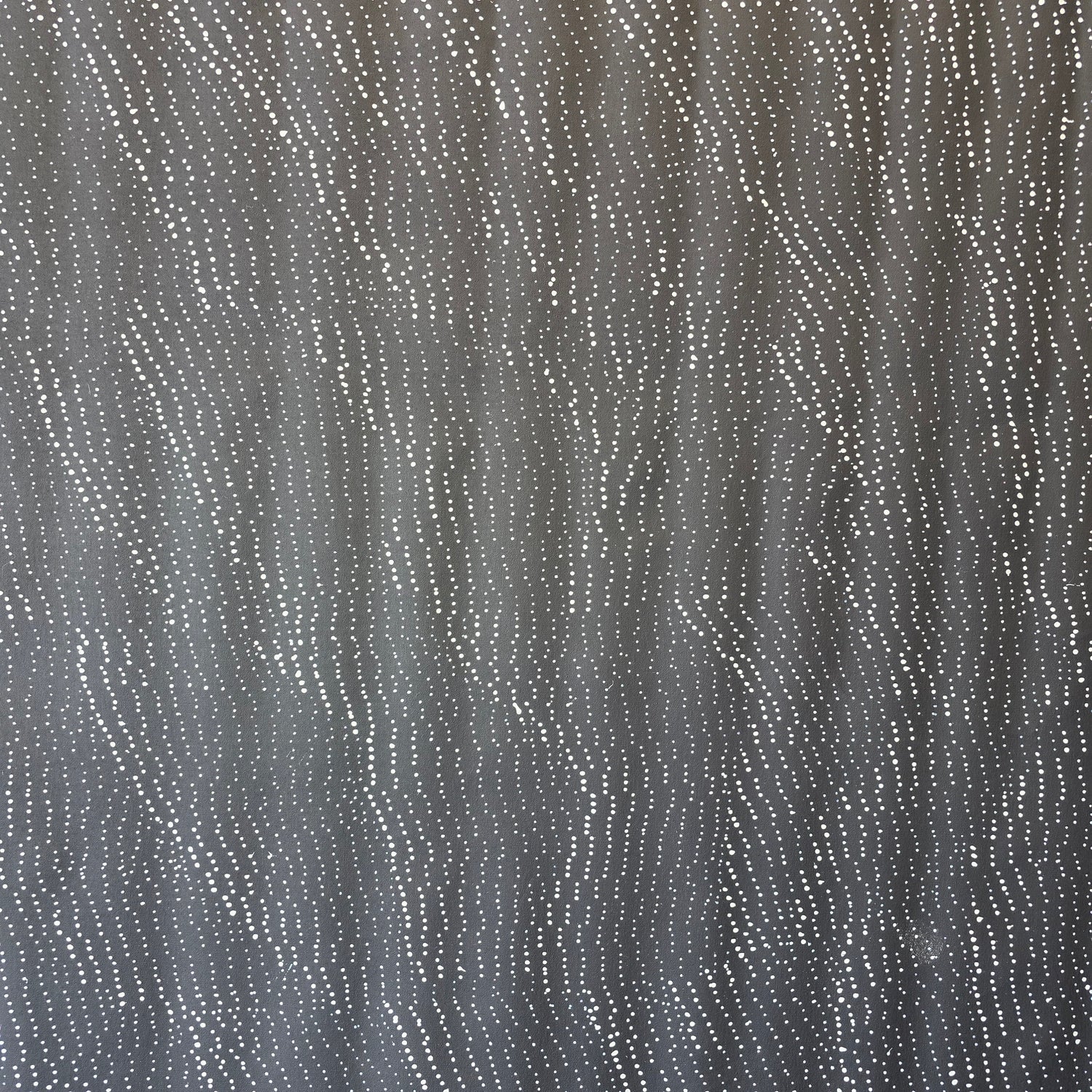
Artistic Journey and Unique Style
Lily Kelly Napangardi commenced her artistic work during the early 1980s by helping her spouse Norman Kelly with his artwork. She established her artistic approach which replaced both figurative depictions and static landscapes with the abstract places of Australia.
Her artistic signature consists of applying delicate dots of white and ochre colours on the black canvas while precisely mirroring the desert sand patterns' fluid motion. Kelly creates visual rhythms in her artwork, demonstrating both a refined strength and a depiction of desert dunes and natural landscapes in motion.
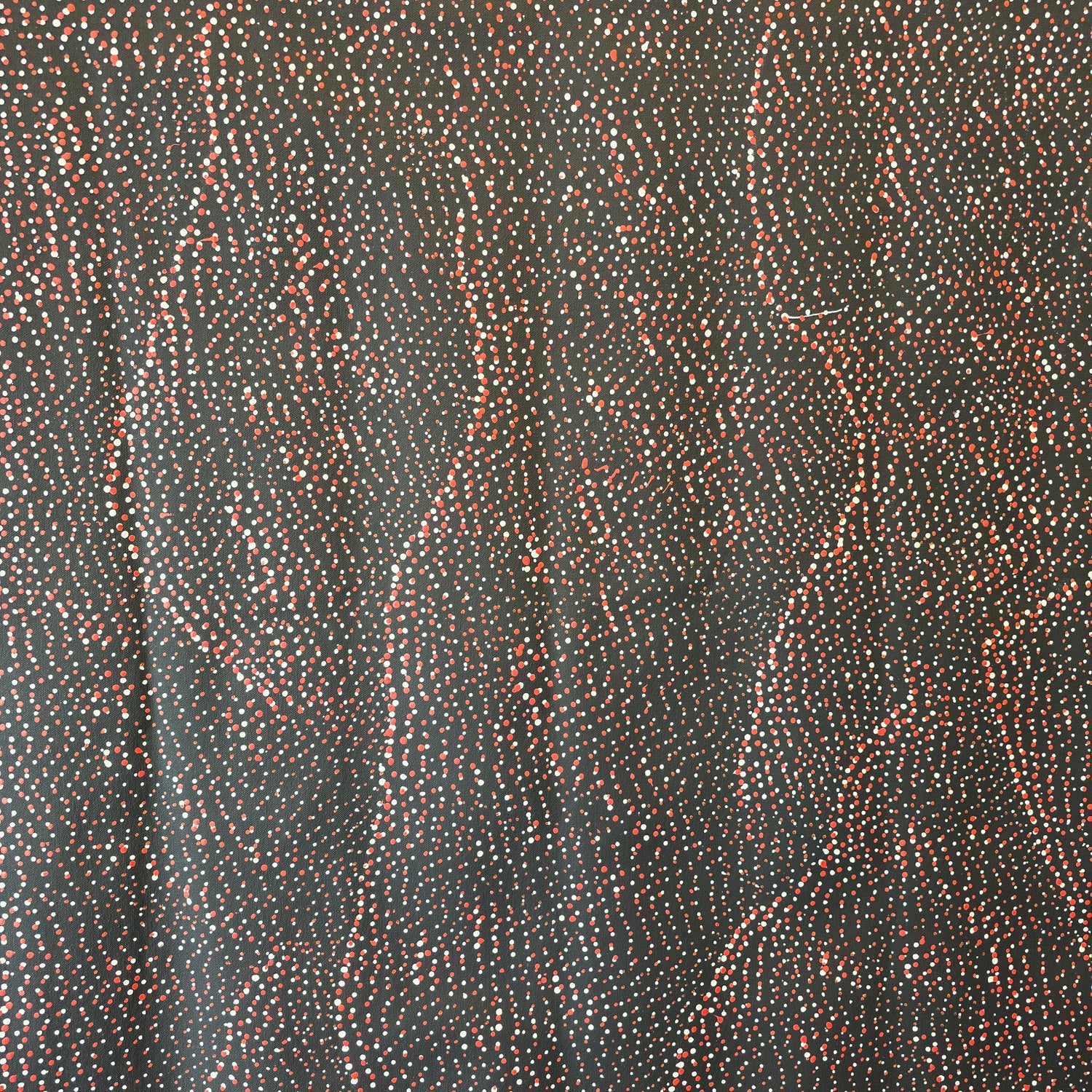
Lily distinguishes herself from other Aboriginal artists because she prefers working with a monochromatic scheme instead of using broad colour palettes thus creating complex compositions. The amount of meaning in her paintings goes beyond land depiction because it present a spiritual outlook on environmental relationships according to Indigenous worldview.
Recognition and Achievements
Lily Kelly Napangardi gained national and international status because of her remarkable artistic achievements. Major professional achievements of Napangardi include:
Collapsible content
1986
Winner of the Northern Territory Art Award for Excellence in Aboriginal Painting, an acknowledgement of her remarkable talent and contribution to Indigenous art.
2003
Finalist in the prestigious Telstra National Aboriginal and Torres Strait Islander Art Award, one of the most significant awards for Indigenous artists in Australia.
2006
A major achievement came when Australian Art Collector magazine included her among the 50 Australian artists whose works are highly sought after by collectors. This designation solidified her position as a leading contemporary Aboriginal art creator.
Her artwork resides in various famous public and private collections such as at the National Gallery of Australia (Canberra), the Art Gallery of New South Wales (Sydney), and the Musée du quai Branly (Paris) together with other notable institutions.
The world’s leading gallery and art fair exhibitions showcase Lily’s works because she conveys desert landscape energy through her exceptional artistic talent attracting prominent art collectors along with curators and art enthusiasts.
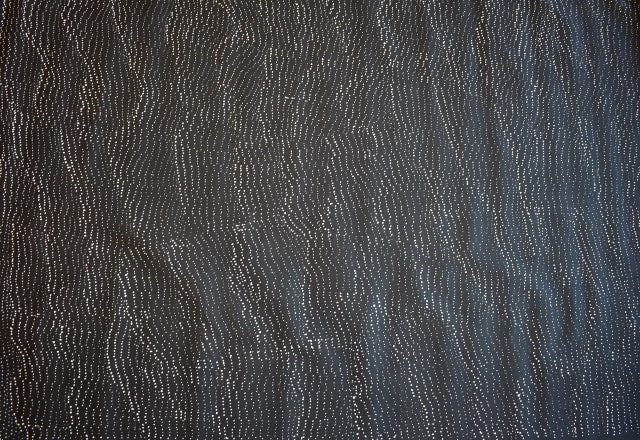
Legacy and Cultural Impact
As a senior law woman Lily Kelly Napangardi maintains an essential position in her community. Her duties as a senior law woman require her to protect the sacred Dreaming stories while preserving traditional knowledge for future cultural strength.
She instructs upcoming generations of women in her community about ceremonial dancing and singing products along with traditional painting methods that stretch back multiple centuries. Her lifelong effort to protect Aboriginal culture extends past artistic work because she spends her life defending her people's cultural heritage and strength.
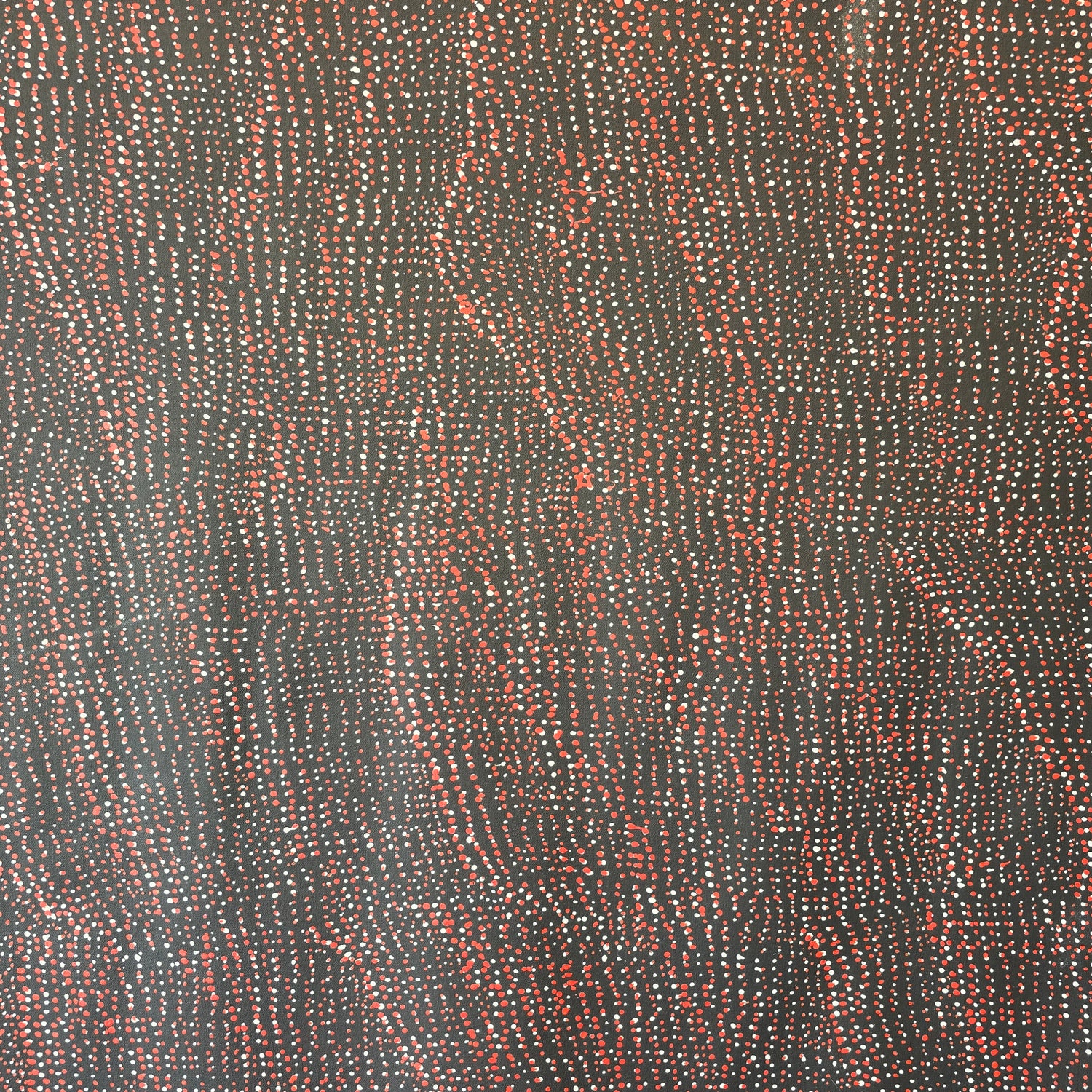
Through her artwork, she has achieved vital educational contributions towards making non-Indigenous audiences more familiar with Aboriginal art complexities. Her paintings provide non-Indigenous audiences with new insights into the profound spiritual and environmental relationships Aboriginal people have practised since the time of tens of thousands of years.
Explore Lilly Napangardi’s Art with Mandel
Lily Kelly Napangardi’s art is far more than just visually striking—it is a profound expression of the land, culture, and traditions of the Luritja people. Her intricate dot work transports viewers to the vast and dynamic landscapes of Central Australia, capturing the essence of movement, history, and spirituality.
If you are captivated by Lily Kelly Napangardi’s work, explore her paintings at Mandel Aboriginal Art Gallery. Contact us to contribute to the ongoing legacy of artists like Lily Kelly Napangardi and help sustain one of the world’s oldest and most vibrant artistic traditions.

